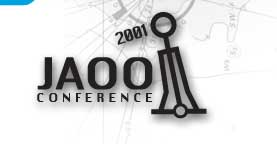|
|
 |
<bigwig> service: jaoo
Bio:
Trygve Reenskaug is professor emeritus of informatics at the
University of Oslo and senior technical advisor to Mogul Norway. He has
40 years experience in software engineering research and the development
of industrial strength software products. He has extensive teaching and
speaking experience including keynotes, talks and tutorials. His firsts
include the Autokon system for computer aided design of ships with end
user programming and a data base oriented architecture from 1960; object
oriented applications and collaboration (role) modeling from 1973; the
world's first reusable object oriented framework in 1979; the OOram
method and tools for collaboration modeling from 1983; and the
authoritative book on role modeling in 1995. He was a member of the UML
Core Team, and is currently involved with UML improvements. He is also
engaged in creating methods and tools for the development of distributed
information systems.
Roles and Classes: Two methods for organizing your
thoughts
Abstract
As all humans, we like to categorize things and ideas into comfortable
groupings. Classification is a well-known method; we classify things
according to their inherent characteristics. "All things made of wood"
is an example of a class. Categorization according to purpose is more
commonly used. "All chairs" describes all artefacts that are suitable
for sitting on; they are categorized by the role they play in a context.
UML supports both methods of categorization. Classification for modeling
build time aspects such as code, packaging and deployment. Role modeling
for run time aspects such as containment, configuration, and system
behavior. The talk will focus on role modeling because it is still not
widely recognized and therefore under-utilized.
Tutorial:
Architectural Design of Distributed Enterprise Systems
Abstract
The foremost challenge to the architect's genius is to conceive of a
system that is habitable, functional, economical and general. The
challenge is resolved in a description of the future system that answers
questions such as:
- Who are the users (actors)?
- What are their goals (use cases)?
- What are their processes?
- What are the system components?
- What are their responsibilities?
- How do they collaborate?
Based on this top level description, the architect finally elaborates
construction details such as important classes, relationships and
software packaging.
Audience: Systems architects and programmers
Background: Some programming, e.g., Java. Distribution should not be a
mystery
|
|

|
http://www.ifi.uio.no/~trygver
Presentations:
Role Modeling (Best Practise, Software Design & Architecture)
Trygve Reenskaug, University of Oslo
Tuesday [15:00 - 15:45]
Conference Hall
Slides from this presentation
Next speaker

|




